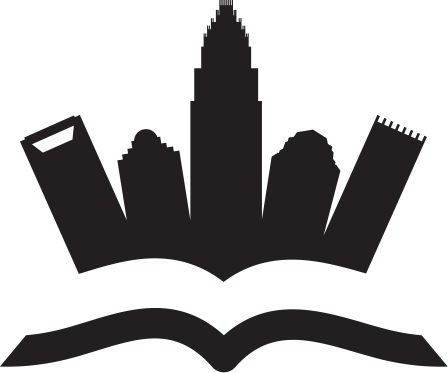 The demand for alternative healing practices has never been higher. In the post-pandemic era, people are actively seeking deeper forms of healing—ones that go beyond pills and surface-level treatments. Energy healing, once considered fringe, is now a respected part of holistic health. As a result, more individuals are pursuing energy healing courses and certifications to make this path their professional calling.
The demand for alternative healing practices has never been higher. In the post-pandemic era, people are actively seeking deeper forms of healing—ones that go beyond pills and surface-level treatments. Energy healing, once considered fringe, is now a respected part of holistic health. As a result, more individuals are pursuing energy healing courses and certifications to make this path their professional calling.
If you’re drawn to the idea of facilitating energetic balance, emotional release, and deep healing through non-invasive methods, becoming a certified energy healer could be the right path for you. This guide walks you through everything you need to know—what energy healing really is, what professional training entails, and how to establish yourself in the growing field of integrative wellness.
What Is Energy Healing—and Why Is It Gaining Momentum?
At its core, energy healing is the practice of working with the body’s subtle energy fields to restore harmony and vitality. Unlike conventional medicine, which focuses on physical symptoms, energy healing operates at the energetic level—addressing emotional trauma, stress imprints, and energetic blockages that often manifest physically.
Techniques vary widely, but they all work toward a common goal: stimulating the body’s natural ability to heal itself. Common forms of energy healing include:
- Reiki
- Chakra balancing
- Pranic healing
- Quantum touch
- Biofield tuning
- Crystal healing
- Sound healing
- Somatic energy therapy
Why is it becoming so popular? Three reasons stand out:
- Science is catching up. Studies in fields like psychoneuroimmunology, epigenetics, and heart-brain coherence support the idea that energy and intention can influence healing outcomes.
- Burnout from traditional systems. Many people are disillusioned with impersonal healthcare systems. They want healing that addresses the whole person—mind, body, and spirit.
- Accessibility and safety. Energy healing is non-invasive, drug-free, and can be practiced in person or remotely, making it accessible across barriers of time and space.
With this surge in interest, energy healing courses have become more structured, more accessible, and more aligned with ethical standards, allowing passionate individuals to transition from curious learners to certified professionals.
Why Professional Energy Healing Training Matters
Anyone can access energy. But to work with it responsibly—especially with other people—you need training. Untrained healers may misread energy fields, ignore trauma signals, or overstep ethical boundaries. This is why energy healer certification is vital.
Formal training programs provide:
- Foundational knowledge: You’ll understand energy anatomy (aura, chakras, meridians), how trauma affects the biofield, and how to create healing protocols.
- Safety and ethics: You’ll learn how to avoid spiritual bypassing, trauma reactivation, and unhealthy energetic entanglements with clients.
- Hands-on experience: You’ll practice assessing energy fields, performing healing sessions, and integrating other tools like breathwork, sound, or guided visualization.
- Professional tools: You’ll learn how to structure sessions, maintain client records, and build your own healing practice.
In an unregulated field like energy healing, certification ensures that you operate with credibility, accountability, and competence—especially important if you plan to work alongside therapists, holistic doctors, or within retreat settings.
What You Learn in an Energy Healing Course
Comprehensive energy healing courses go far beyond intuitive development. They are structured programs designed to turn spiritual sensitives into skilled professionals. Here’s what a typical curriculum includes:
1. Energy Anatomy and Mapping the Biofield
You’ll learn how to perceive, assess, and map the body’s energy systems—auric layers, chakras, meridians, and energetic blockages. Training may include pendulum assessment, hand scanning, or visual reading of energy fields.
You’ll also learn how different energy centers correspond to emotional patterns, physical organs, and trauma imprints—allowing you to identify root causes, not just symptoms.
2. Techniques and Modalities
Courses often include multiple techniques so you can choose what aligns most with your style. These may include:
- Reiki (Levels I–III and Master)
- Chakra clearing and realignment
- Light language activation
- Crystal grid healing
- Sound therapy (using tuning forks, gongs, or singing bowls)
- Distance healing protocols
- Energy cord clearing and protection
Some modern trainings also incorporate breathwork, trauma-informed facilitation, or neuroscience-backed protocols for nervous system regulation.
3. Client Facilitation and Ethics
You’ll be trained to hold safe, grounded space for clients. This includes:
- Conducting intake interviews
- Managing emotional responses during sessions
- Using language that empowers the client
- Understanding your scope of practice
- Practicing energetic hygiene and boundaries
Ethical integrity is a cornerstone of any serious energy healing course.
4. Personal Embodiment and Energetic Mastery
To guide others, you must first heal yourself. Most programs emphasize self-practice, shadow work, inner child integration, and daily energy clearing rituals. You’ll emerge not only as a practitioner, but as a more grounded, intuitive, and embodied human being.
Online vs In-Person Energy Healing Courses
Both online and in-person formats can be effective, depending on your learning style, location, and availability.
Online energy healing courses offer:
- Accessibility to global teachers
- Lower costs
- Self-paced modules
- Interactive webinars and virtual practicum sessions
They work best for those with strong self-discipline and access to practice partners.
In-person training, often offered as retreats or weekend intensives, offers:
- Direct energy transmission and mentorship
- Group field dynamics and collective healing
- Opportunity to feel subtle shifts in real-time
- Practice under live supervision
Some of the most transformative experiences happen in physical settings where group coherence enhances learning.
Reputable platforms like InnerCamp offer hybrid models that combine the flexibility of online training with optional in-person immersions—ideal for those seeking depth and freedom.
How to Choose the Right Certification Program
Not all energy healing certification programs are created equal. When evaluating a course, ask yourself:
- Does the curriculum include science-based foundations and trauma-informed approaches?
- Are instructors experienced practitioners, not just theorists?
- Is there a mentorship component or live practicum?
- Is the program recognized within the holistic wellness industry?
- Does it align with your spiritual and professional values?
A quality training like InnerCamp’s energy healing course not only certifies you but empowers you to embody the energy you want to transmit.
Also consider logistics:
- Program length (from 4-week intensives to 12-month journeys)
- Cost (certifications range from $300 to $6000 depending on depth)
- Community (some programs offer lifetime alumni access and client referrals)
Choose a path that balances structure with intuition, discipline with heart.
How to Become a Certified Energy Healer: Step-by-Step
If you’re serious about becoming a professional energy healer, follow this roadmap:
- Start with self-practice. Read books, explore free resources, and experiment with energy techniques in your daily life.
- Choose a certification program. Select a program that resonates with your intentions and learning style.
- Complete the coursework. Dedicate time to both the theoretical and practical modules. Attend live calls or retreats if available.
- Document practice sessions. Most certifications require that you perform a certain number of sessions on real clients and submit case studies.
- Pass final assessments. This might be a live demonstration, written reflection, or mentorship call.
- Receive your certificate. You can now legally offer energy healing sessions in most regions.
- Launch your practice. Build a website, join healing platforms, host workshops, and continue growing your skills.
Remember: certification is just the beginning. The real mastery begins when you work with diverse people and meet them at their deepest levels.
Career Paths and Business Opportunities
Once certified, your options are wide. Here are possible paths:
- Private practice: Offer 1:1 or group sessions, both in person and online.
- Workshops and retreats: Collaborate with yoga studios or wellness centers.
- Integrative wellness: Partner with holistic doctors, therapists, or coaches.
- Online platforms: Create guided healing audios, courses, or group programs.
- Complementary services: Add energy healing to coaching, breathwork, or bodywork sessions.
You can specialize in areas such as trauma recovery, spiritual awakening, women’s health, fertility, burnout, grief, or intuitive development. Some practitioners combine energy work with herbalism, sound therapy, or shamanic journeying for deeper results.
Final Thoughts: Healing as Sacred Service
Choosing to become an energy healer isn’t just a job—it’s a sacred responsibility. When you hold space for someone’s energetic system, you touch the unseen layers of their soul. The training you receive matters, not just for credibility, but for the depth of presence you can bring.
The world needs healers who are embodied, informed, ethical, and connected to something greater than themselves. With the right energy healing course and a grounded approach to practice, you can become a beacon of restoration in an increasingly fragmented world.
Healing begins with energy. And energy begins with intention.


